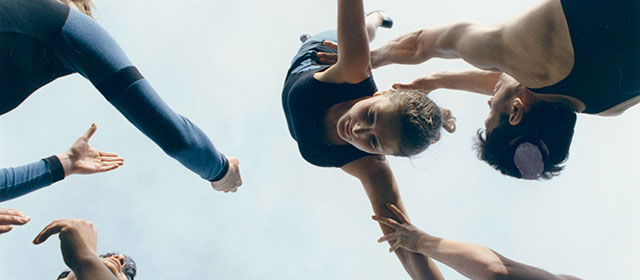He korero whakarapopoto
Origins
Modern dance originated in Europe and America in the late 19th and early 20th centuries. It was seen as combining the physical and emotional, to express the human spirit.
From the late 1930s some modern dance practices were brought to New Zealand and taught to New Zealanders by Europeans.
Mid-20th century
In the mid-20th century New Zealanders travelled to learn about dance.
- Shona Dunlop MacTavish studied in Vienna from 1935. She returned to Dunedin in 1956 and was still teaching and choreographing in the 2000s.
- Rona Bailey studied physical education and dance in the US from 1937. Back in New Zealand she became a government physical welfare officer, and with Philip Smithells, the superintendent of physical education, founded the New Dance Group in Wellington. Their dance was modern, political and expressive.
Modern dance flourishes
A number of contemporary dance companies were set up in the 1970s, including Impulse Dance Theatre and Movement Theatre. Limbs was formed in 1977. They believed dance could reflect contemporary life, and took modern dance to large audiences. In 1980 gymnast Douglas Wright joined Limbs. He went on to become an important choreographer and dancer who later had his own company.
Limbs closed down in 1989.
New developments
A number of short-term companies were formed for particular productions, and new choreographers emerged.
- Michael Parmenter returned to New Zealand from the US in 1989 and began a dance and choreography career that would last more than 20 years.
- Wellington ballet teacher Deirdre Tarrant set up Footnote Dance in 1985 to support original choreography and teach dance in schools.
- Mark Baldwin found success with the Ballet Rambert in London, and formed his own London-based dance company.
- In 2012 former Limbs member Shona McCullagh founded the New Zealand Dance Company.
Contemporary Māori and Pacific dance
Te Kanikani O Te Rangatahi, a dance company for young unemployed Māori, was set up in 1984. It was followed by the Māori-focused companies Taiao and Atamira. Merenia Gray formed the Merenia Gray Dance Theatre in 1994, while Okareka was set up in 2007 by Taiaroa Royal and Taane Mete. These companies brought together different cultures and forms of dance.
Black Grace, established in 1995 by Samoan dancer Neil Ieremia, has explored issues such as domestic violence and racism. Mau, the company of Samoan choreographer Lemi Ponifasio, has been critically acclaimed worldwide for its dramatic works.





